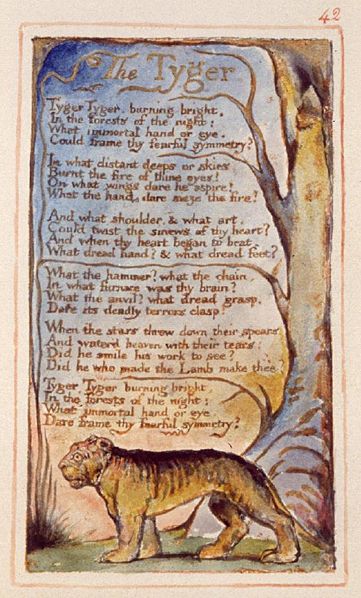A critical reading of an iconic poem
‘The Tyger’ is arguably the most famous poem written by William Blake (1757-1827); it’s difficult to say which is more well-known, ‘The Tyger’ or the poem commonly known as ‘Jerusalem’. The poem’s opening line, ‘Tyger Tyger, burning bright’ is among the most famous opening lines in English poetry (it’s sometimes modernised as ‘Tiger, Tiger, burning bright’). Below is this iconic poem, followed by a brief analysis of the poem’s language, imagery, and meaning.
Tyger Tyger, burning bright,
In the forests of the night;
What immortal hand or eye,
Could frame thy fearful symmetry?
In what distant deeps or skies.
Burnt the fire of thine eyes?
On what wings dare he aspire?
What the hand, dare seize the fire?
View original post 767 more words

Just for fun, to glean more perspectives on your questions about Blake’s theology, with the tension between the Old Testament and New Testament understandings of the Holy One, you might look to the Muggletonians, one of the radical religious groups arising in the mid-1600s England, who are suspected of being an influence on the poet. Somehow, I could see the Tyger being read over tea more than from a pulpit.
Thank you for sharing this great post, Kevin.
You are welcome. It is, as you say a great post, about a wonderful poem. Best, Kevin